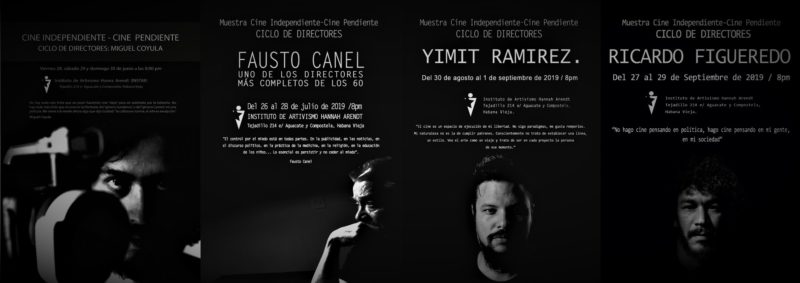A Place in Havana Where Artists and Intellectuals are the Protagonists
Lynn Cruz

HAVANA TIMES – Last weekend, a film series by Cuban film producer and director Ricardo Figueredo, was presented at the Hannah Arendt International Institute for Artivism (INSTAR), run by visual artist Tania Bruguera. The pending Independent Film Screenings take place on the last weekend of every month, at INSTAR’s headquarters, located at no. 214 Tejadillo Street, between Aguacate and Compostela streets in Old Havana.
The program includes four documentaries: Despertar (2011), a movie which gave rise to (one of Cuba’s most important living directors) Fernando Perez’s disagreement and subsequent resigning from ICAIC’s Young Filmmakers Festival. Operacion Alfa o lo que le pasó a Benito Manso (2011). La Singular Historia de Juan Sin Nada (2016), debated at the Gibara Film Festival, chaired by actor Jorge Perugorria, where it was finally banned, and La Teoría Cubana de la Sociedad Perfecta (2018). All of which were produced by Cooperativa Producciones, founded by this director as well as Diana Reyes.
Figueredo became the fourth filmmaker invited to this space starring directors, which I have the pleasure of moderating. My involvement began with a phone call from Bruguera. She had the dream of creating a film club. Because there are many film clubs across the island, I suggested we think about doing it differently. Together, we polished off this film event that was rejected by three important critics, from different generations.
It was inaugurated by filmmaker Miguel Coyula (the only guest who didn’t have a moderator), last June. In the face of critics’ negative response, I decided to grab the bull by the horns and got ready to get in touch with subsequent directors myself. I have to thank Bruguera for the trust she instilled in me, who has never doubted me, in spite of my fear of the unknown.
We also hoped that Fausto Canel would inaugurate the space, but as a result of bureaucratic problems (Cuba demands an unusual procedure for Cubans who abandoned the island before 1971, while the processing office in Florida left this piece of information out), he was unable to travel to Havana from Miami airport.
Canel’s presence has been vital within the philosophy we defend: “Picking up the ideas of people who, like him, founded the Cuban Institute of Cinematographic Art and Industry (ICAIC).” Filmmakers back then created a manifesto which negated the perfection of Hollywood filmmaking, among other things. This was Cine Nuevo, Cine Libre or Imperfecto (New Latin American Film, Free or Imperfect Film).
I firmly believe that artists like Coyula, Yimit Ramirez (who was our guest in August), as well as Figueredo, have been heirs (subconsciously a lot of the time) of those ideas regarding Cuban film in the ‘60s, which are making a mysterious comeback.
Our proposals also include the drafting of a new manifesto by all of the filmmakers who are invited by this Film Event, including Canel. On the other hand, we are preparing a Media Library, so as to ensure the conservation and preservation of movies. Which has become a global problem and Cuba is no exception, especially those made by independent filmmakers or those who have been taken off Cuba’s big screen.
Even with Decree-Law 373, where these problems have been discussed, there doesn’t seem to be an immediate solution to the economic crisis, among other things, we are facing that seems to be never-ending. Meanwhile, given the eternal battle between artists and politicians in these past 60 years, it isn’t hard for us to imagine that archives and storage rooms are still not open for damned movies and directors.
Many of them such as Canel, Eduardo Manet, Fernando Villaverde, Nestor Almendros, Nicolas Guillen Landrian, Orlando Jimenez Leal, to name a few, are not still truly free from the chains of “oblivion”. In Coyula’s case, the association still wants to use him as an example of what happens if you go astray. Maybe because in spite of everything, he moves forward against every flag. He isn’t afraid to show his movies in spaces considered “counter-revolutionary” by the government, such as the El Circulo gallery, which is run by visual artist Luis Trapaga, and he is a threat in their eyes because of this.
To finish off, I would like to remind you of a moment in the movie Easy Rider, where the character played by Jack Nicholson says: “They’re scared of what you represent to ’em. Of course, don’t ever tell anybody that they’re not free, ’cause then they’re gonna get real busy killin’ and maimin’ to prove to you that they are.”





